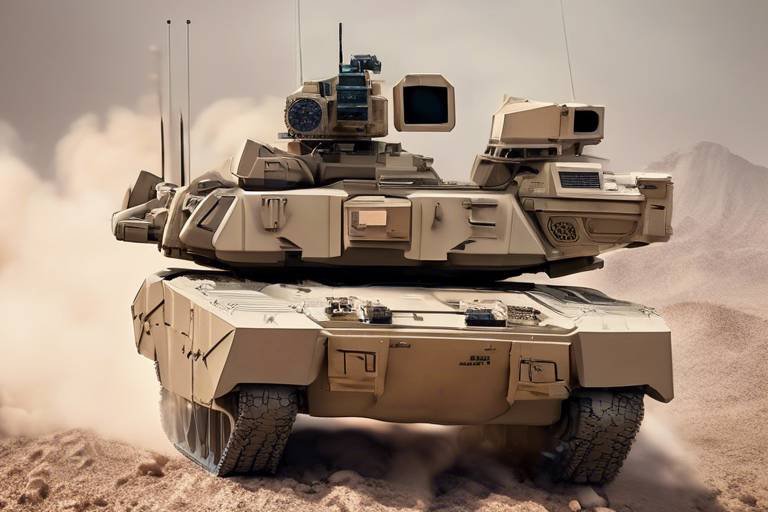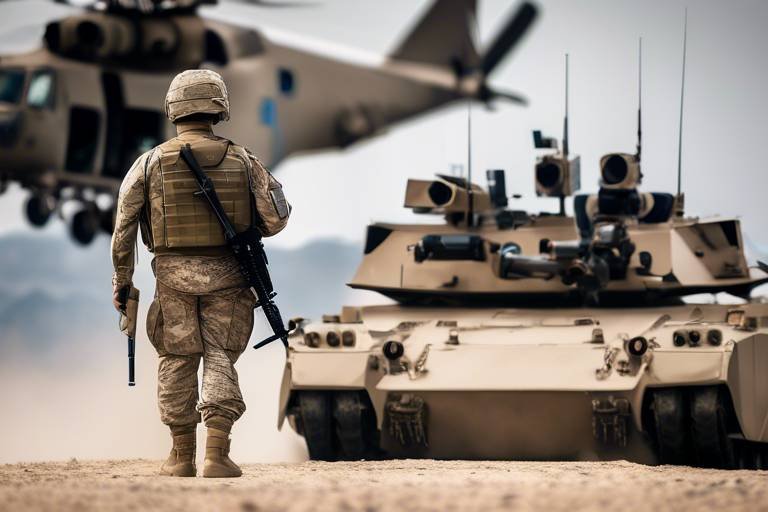Evaluating the Future of Maritime Defense Technologies
The world of maritime defense is undergoing a significant transformation, driven by rapid advancements in technology and the evolving nature of threats. As nations increasingly recognize the importance of securing their maritime interests, the focus on innovative technologies has never been more critical. This article delves into the latest developments in maritime defense technologies, examining how they enhance national security and the challenges that lie ahead in maintaining safe and secure maritime operations.
In recent years, we have witnessed a surge in the integration of cutting-edge technologies within naval forces. From artificial intelligence (AI) to unmanned systems and advanced sensor technologies, these innovations are not just enhancing operational capabilities; they are also redefining the very strategies employed in maritime defense. Imagine a naval fleet that can predict potential threats before they materialize, or drones that can autonomously conduct surveillance missions without human intervention. These scenarios are becoming a reality, thanks to the relentless pursuit of technological advancements.
However, with great power comes great responsibility. The introduction of these technologies brings forth a myriad of challenges, particularly in the realm of cybersecurity. As maritime systems become more interconnected, the risk of cyberattacks increases exponentially. Naval assets are now vulnerable to threats that can compromise their operational integrity, making it essential to implement robust cybersecurity measures. This article will explore the vulnerabilities inherent in modern maritime defense systems and the critical steps that must be taken to mitigate these risks.
One of the most exciting developments in maritime defense is the rise of autonomous vessels. These cutting-edge ships have the potential to revolutionize various aspects of naval operations, including surveillance, logistics, and even combat support. Imagine a fleet of unmanned vessels patrolling vast ocean expanses, gathering intelligence, and responding to threats without risking human lives. This section will delve into the potential roles of autonomous vessels in defense operations and the advantages they offer in terms of efficiency and effectiveness.
As we embrace the future of autonomous operations, it is crucial to establish a regulatory framework that ensures the safe integration of these technologies into maritime defense. Existing regulations must be evaluated, and new policies developed to address the unique challenges posed by autonomous vessels. This article will discuss the current regulatory landscape and the pressing need for comprehensive guidelines to govern the operation of these innovative systems.
Moreover, the deployment of AI in military applications raises profound ethical questions. The moral implications of using autonomous systems in combat scenarios cannot be overlooked. This article will explore the ethical considerations surrounding AI in warfare, challenging readers to contemplate the potential consequences of delegating critical decision-making to machines.
In addition to technological advancements, the importance of international collaboration in maritime defense cannot be overstated. Global challenges such as piracy, trafficking, and territorial disputes require a united front. This section will highlight the significance of international partnerships and joint exercises in enhancing maritime defense capabilities, emphasizing that cooperation is key to addressing the multifaceted threats faced by nations today.
Joint naval exercises, for instance, serve as a platform for allied nations to improve interoperability and readiness. By working together, countries can share best practices, refine their strategies, and build trust among their forces. This article will review the benefits of such exercises and how they contribute to a more secure maritime environment.
Additionally, effective information sharing is vital for combating maritime threats. Existing agreements between nations play a crucial role in facilitating communication and coordination in addressing piracy, trafficking, and other security challenges. This article will examine these agreements and their impact on enhancing maritime security.
As we look ahead, the landscape of maritime defense technologies is both exciting and complex. The advancements we are witnessing today hold great promise for the future, but they also come with challenges that must be addressed. By embracing innovation while prioritizing security and ethical considerations, nations can navigate the waters of maritime defense with confidence.
- What are the main technologies influencing maritime defense today?
Innovative technologies such as artificial intelligence, unmanned systems, and advanced sensors are significantly shaping maritime defense strategies.
- How do autonomous vessels contribute to maritime operations?
Autonomous vessels can enhance surveillance, logistics, and combat support, providing efficiency and reducing human risk.
- What are the cybersecurity risks in maritime defense?
As systems become interconnected, they become vulnerable to cyberattacks, necessitating robust cybersecurity measures to protect naval assets.
- Why is international collaboration important in maritime security?
Global threats require a united response; international partnerships enhance capabilities and improve readiness against shared challenges.

Emerging Technologies in Naval Warfare
The landscape of naval warfare is undergoing a dramatic transformation, largely driven by emerging technologies that promise to redefine how nations safeguard their waters. Imagine a battlefield where decisions are made in the blink of an eye, where machines can analyze data faster than any human, and where unmanned vessels patrol the seas. This is not the stuff of science fiction; it is the reality that is quickly becoming the norm in maritime defense. With advancements in artificial intelligence, unmanned systems, and advanced sensors, the operational capabilities of naval forces are being enhanced significantly.
Artificial intelligence (AI) is at the forefront of this revolution. It allows for the processing of vast amounts of data, enabling naval commanders to make informed decisions in real-time. For instance, AI can analyze patterns in enemy movements, predict potential threats, and suggest optimal responses. This capability not only enhances situational awareness but also reduces the cognitive load on human operators. Imagine a ship equipped with AI that can autonomously adjust its course to avoid threats while simultaneously alerting its crew of potential dangers. The implications for national security are profound.
Unmanned systems, including unmanned aerial vehicles (UAVs) and unmanned underwater vehicles (UUVs), are also changing the game. These systems can be deployed for various missions, from reconnaissance to logistics support, without putting human lives at risk. For example, UAVs can conduct surveillance over vast ocean areas, gathering intelligence and relaying it back to command centers without the need for a manned aircraft. Similarly, UUVs can explore underwater environments, detect mines, and gather data on enemy submarines, all while remaining hidden from detection. This capability not only enhances operational effectiveness but also extends the reach of naval forces, allowing them to operate in contested environments.
Advanced sensors play a crucial role in this technological evolution. Modern naval vessels are equipped with sophisticated radar, sonar, and communication systems that provide unparalleled situational awareness. These sensors can detect threats from great distances, track multiple targets simultaneously, and share information seamlessly across platforms. For instance, a naval fleet can operate as a cohesive unit, with each ship sharing data in real-time, allowing for coordinated responses to threats. This interconnectedness is essential in today’s complex maritime environment, where threats can emerge from various sources, including piracy, terrorism, and state-sponsored aggression.
However, with these advancements come challenges. The integration of these technologies into existing naval operations requires substantial investment and training. Furthermore, as naval warfare becomes more reliant on technology, the potential for cyber threats increases. Protecting these systems from cyberattacks is paramount, as a single breach could compromise entire fleets. Thus, while emerging technologies offer incredible opportunities for enhancing naval warfare, they also necessitate a reevaluation of existing strategies and security measures.
In conclusion, the future of naval warfare is bright, with emerging technologies paving the way for more effective and efficient operations. As nations continue to invest in AI, unmanned systems, and advanced sensors, the maritime landscape will become increasingly sophisticated. The challenge lies not only in adopting these technologies but also in ensuring that the human element remains a critical component of naval operations. After all, technology is a tool, and its effectiveness ultimately depends on the people who wield it.
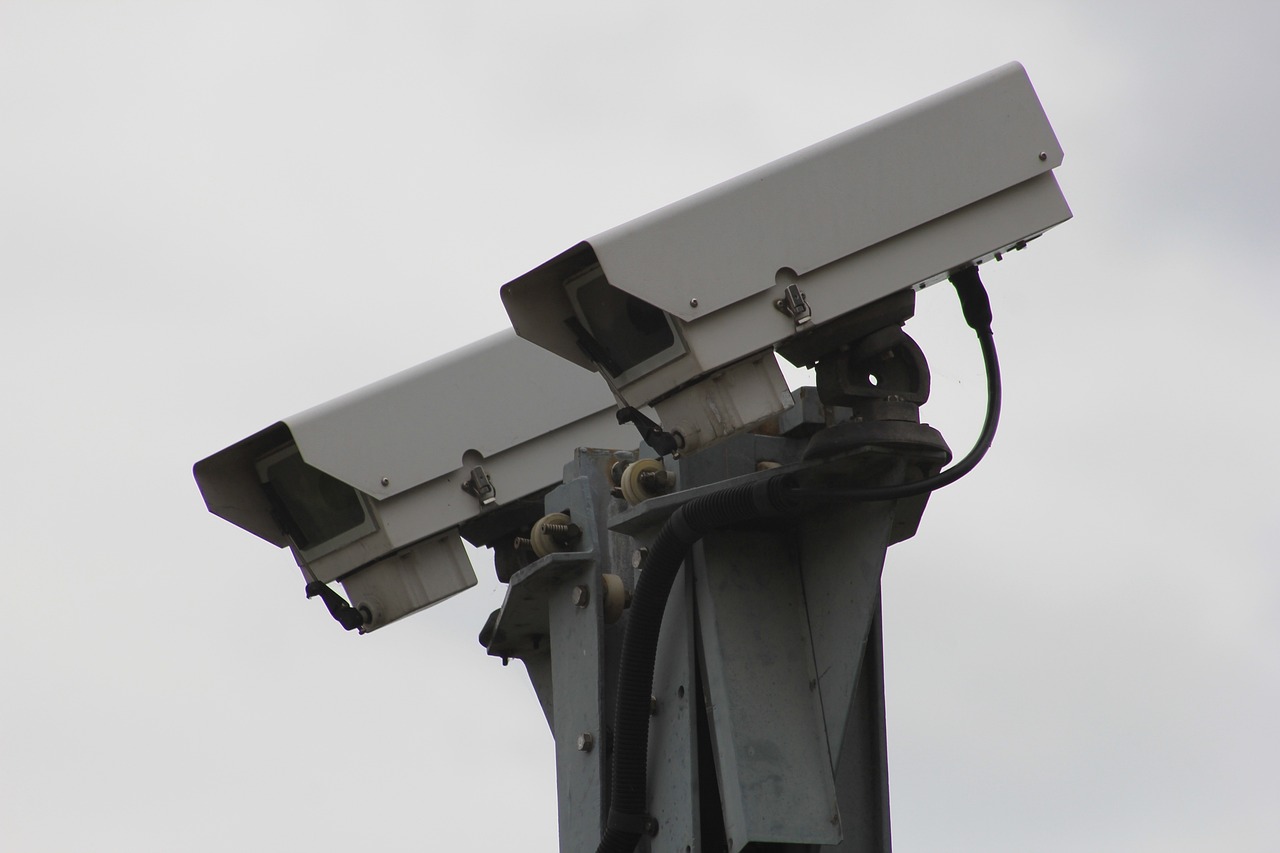
Cybersecurity Challenges in Maritime Defense
As we sail deeper into the digital age, the maritime domain is becoming increasingly interconnected. This transformation, while promising enhanced operational efficiency, also opens the floodgates to a myriad of cybersecurity challenges. Imagine a vast ocean where every ship, buoy, and port is linked to a digital network—sounds efficient, right? But what happens when a storm brews in the form of cyber threats? The implications for national security can be staggering.
One of the most pressing concerns is the vulnerability of critical naval systems. These systems, which include navigation, communication, and weaponry, are now often reliant on software and networks that can be infiltrated. A successful cyberattack could lead to catastrophic consequences, such as loss of control over a naval vessel or the compromise of sensitive information. To visualize this, think of a pirate ship from the past. Instead of swords and cannons, today's pirates wield laptops and malware, ready to hijack a vessel without ever stepping foot on board.
Moreover, the sophistication of cyber threats is evolving at an alarming pace. Cybercriminals are not just your average hackers; they are often backed by state actors with deep pockets and advanced capabilities. This means that the maritime defense sector must continuously adapt and innovate to stay one step ahead. For instance, advanced persistent threats (APTs) can infiltrate systems slowly and stealthily, gathering intelligence before launching a full-scale attack. The maritime industry must implement robust cyber hygiene practices to mitigate these risks.
To combat these challenges, a multi-faceted approach is essential. This includes:
- Investing in Cybersecurity Training: Personnel must be trained to recognize potential threats and respond appropriately.
- Implementing Advanced Security Protocols: Employing encryption, firewalls, and intrusion detection systems can help safeguard critical systems.
- Conducting Regular Security Audits: Routine assessments can identify vulnerabilities before they are exploited.
Additionally, collaboration between government agencies, private sectors, and international partners is paramount. Information sharing can help create a comprehensive defense strategy against cyber threats. By pooling resources and intelligence, nations can fortify their maritime defenses in a way that is greater than the sum of its parts. For example, the establishment of joint cybersecurity task forces can enhance the ability to respond to incidents and share best practices across borders.
In conclusion, as we navigate the waters of modern maritime defense, it is crucial to recognize the significant cybersecurity challenges that lie ahead. The integration of technology into naval operations offers immense benefits, but it also requires a vigilant and proactive approach to safeguard against ever-evolving threats. The maritime community must remain committed to developing robust cybersecurity frameworks that can withstand the tempests of the digital age.
- What are the primary cybersecurity threats facing maritime defense? Cyber threats include hacking, data breaches, and attacks on critical systems, which can jeopardize national security.
- How can maritime organizations improve their cybersecurity? By investing in training, implementing advanced security protocols, and conducting regular audits, organizations can bolster their defenses.
- Why is international collaboration important in maritime cybersecurity? Cyber threats are often global in nature; sharing information and resources can enhance collective security and response capabilities.
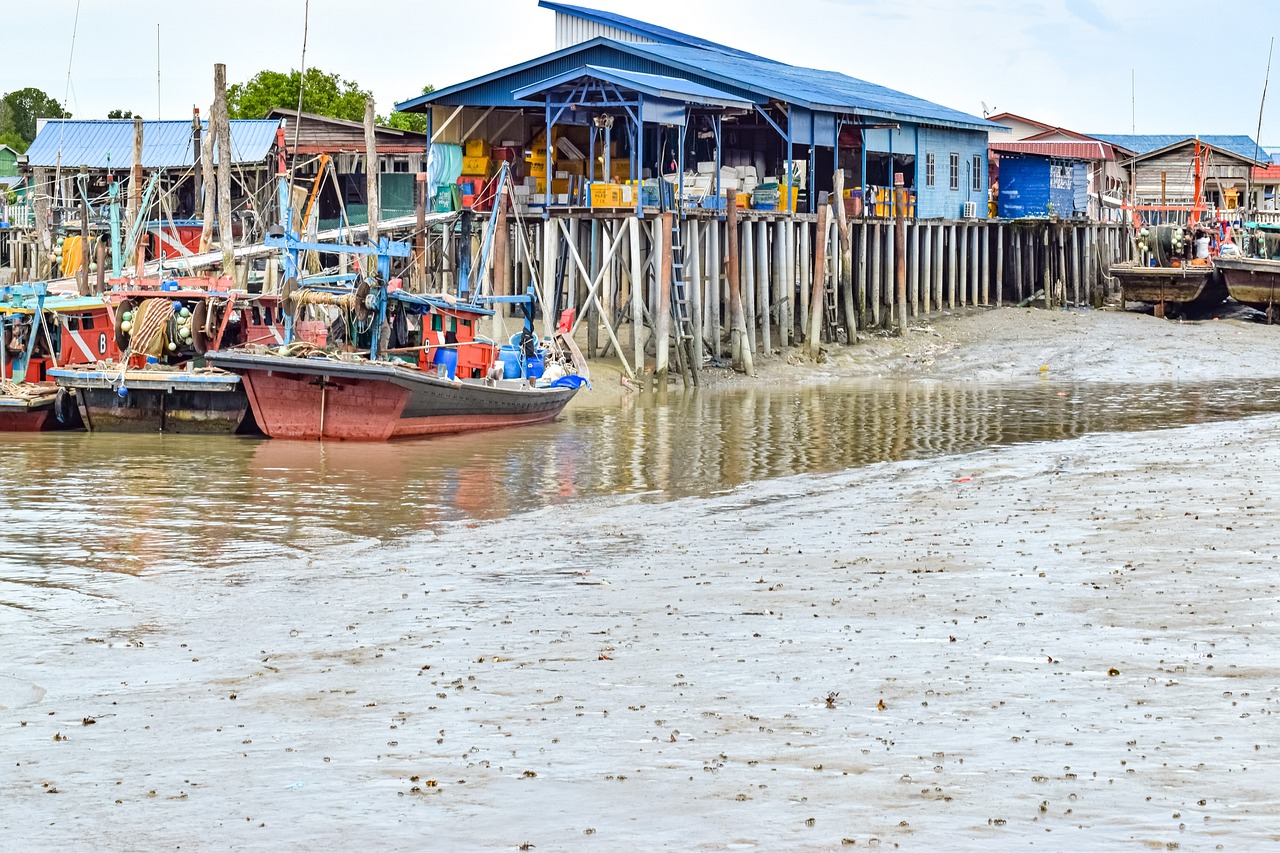
Impact of Autonomous Vessels
The advent of autonomous vessels is nothing short of a revolution in maritime operations. Imagine a world where ships can navigate the vast oceans without human intervention, making decisions based on real-time data and sophisticated algorithms. This shift is not just a technological marvel; it is redefining the very fabric of maritime defense. Autonomous vessels have the potential to serve in various roles, from surveillance and logistics to combat support, thereby enhancing the operational capabilities of naval forces around the globe.
One of the most significant advantages of autonomous vessels is their ability to conduct surveillance missions over extended periods without the fatigue that human crews experience. Equipped with advanced sensors and artificial intelligence, these vessels can monitor vast areas of ocean, detect threats, and relay critical information back to command centers. This capability not only increases situational awareness but also allows for quicker response times in times of crisis.
Furthermore, autonomous vessels can play a pivotal role in logistics and supply chain management. They can transport essential supplies to remote naval bases or assist in humanitarian missions without risking human lives. For instance, during natural disasters, these vessels could deliver aid to affected areas while navigating treacherous waters that might be too dangerous for crewed ships. This flexibility and resilience make autonomous vessels an invaluable asset in both military and civilian contexts.
However, the integration of autonomous vessels into naval operations is not without its challenges. The regulatory framework surrounding their use is still in its infancy. As these vessels operate in international waters, the need for clear guidelines and regulations becomes paramount. It is essential to establish rules that govern their operation to ensure safety and accountability on the high seas. This includes addressing issues such as collision avoidance, navigation protocols, and the legal status of autonomous systems in maritime law.
Moreover, the ethical implications of deploying autonomous vessels in combat scenarios cannot be ignored. Questions arise about accountability in the event of an incident and the moral responsibility of using machines in warfare. As we move forward, it is crucial to engage in discussions about the ethical frameworks that should guide the use of AI and autonomous systems in military applications.
In conclusion, the impact of autonomous vessels on maritime defense is profound and multifaceted. They offer enhanced capabilities for surveillance, logistics, and operational efficiency, but also bring forth critical challenges that require careful consideration. As technology continues to evolve, so too must our understanding of how to effectively and ethically integrate these innovations into our naval strategies.
- What are autonomous vessels?
Autonomous vessels are ships that can operate independently of human crews, using advanced technology to navigate and make decisions. - What roles can autonomous vessels play in maritime defense?
They can be used for surveillance, logistics, reconnaissance, and even combat support. - What are the regulatory challenges associated with autonomous vessels?
There is a need for clear guidelines on their operation, including navigation protocols and collision avoidance measures. - Are there ethical concerns regarding the use of autonomous vessels in warfare?
Yes, deploying machines in combat raises questions about accountability and moral responsibility.
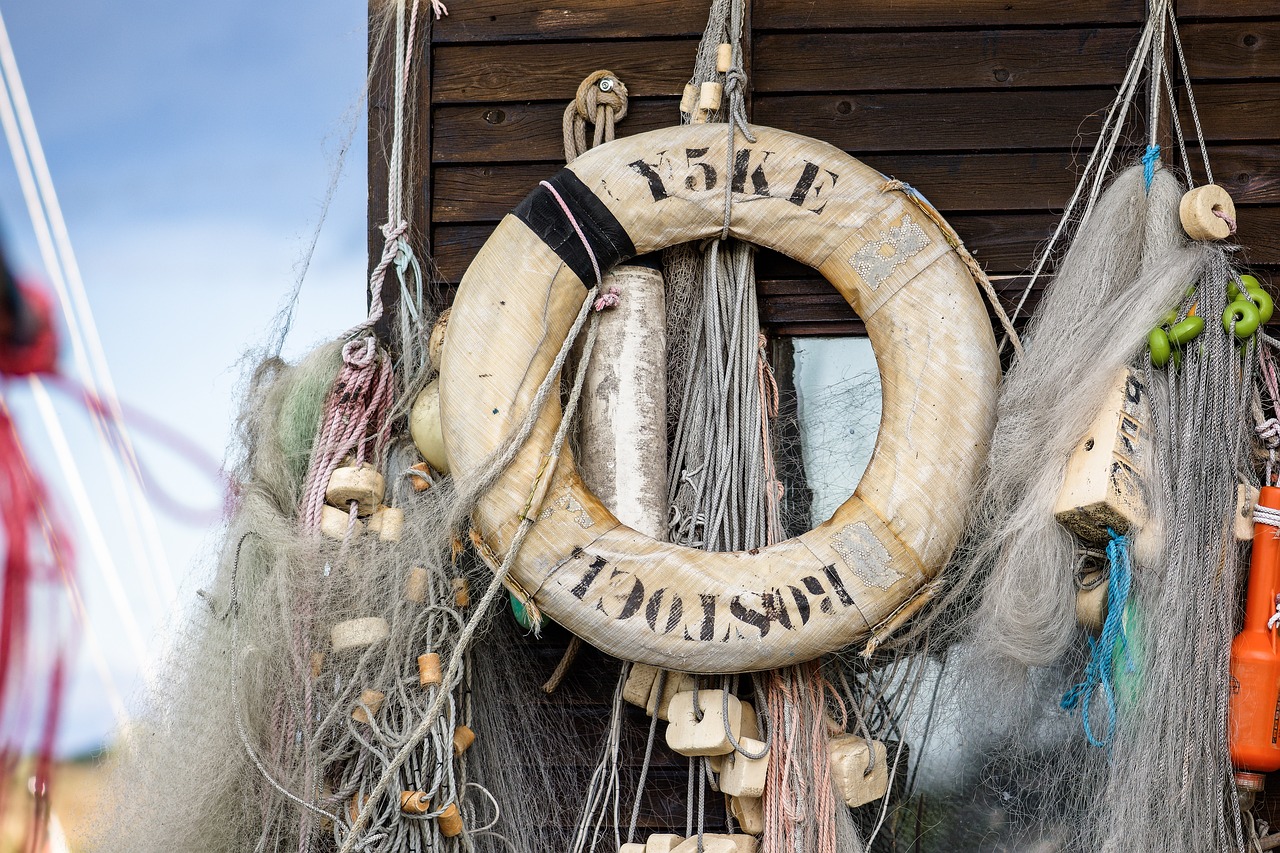
Regulatory Framework for Autonomous Operations
The rapid evolution of autonomous vessels in maritime defense is akin to the dawn of a new era in naval warfare. However, with great innovation comes the necessity for a robust and adaptive regulatory framework. This framework must ensure that these advanced technologies operate safely and effectively while adhering to international laws and standards. As we dive into this topic, it’s essential to understand that the regulations governing autonomous operations are still in their infancy. Countries around the globe are grappling with how to implement rules that both foster innovation and protect national security interests.
One of the primary challenges in establishing a regulatory framework is the diversity of autonomous systems themselves. These vessels can range from small unmanned surface vehicles (USVs) to large autonomous cargo ships. Each type presents unique operational characteristics and risks, necessitating tailored regulations. For instance, the International Maritime Organization (IMO) has begun to address these challenges by developing guidelines that focus on safety, security, and environmental protection. However, these guidelines are often broad and require further refinement to accommodate the specific needs of different autonomous operations.
Moreover, the integration of autonomous vessels into existing naval operations raises questions about accountability and liability. In the event of an accident or incident involving an autonomous vessel, determining who is responsible can be complex. Is it the manufacturer, the operator, or the software developer? This ambiguity highlights the need for clear regulations that delineate responsibilities and establish protocols for incident reporting and investigation.
Additionally, the regulatory framework must consider the interoperability of autonomous vessels with manned ships. As these technologies become more prevalent, ensuring that they can communicate effectively with traditional naval assets is crucial. This includes not only technical compatibility but also adherence to established maritime conventions and practices. The framework must facilitate seamless integration while maintaining safety standards.
To illustrate the ongoing developments in this area, let’s take a look at a table summarizing key regulatory initiatives and their objectives:
| Regulatory Initiative | Description | Objective |
|---|---|---|
| IMO Guidelines for Autonomous Ships | Initial framework for safety and security of autonomous vessels. | Promote safe operation and environmental protection. |
| National Regulations | Country-specific laws governing the operation of autonomous vessels. | Ensure compliance with local laws and international standards. |
| Liability Frameworks | Establishing accountability for autonomous operations. | Clarify responsibilities in case of incidents. |
In conclusion, the regulatory framework for autonomous operations in maritime defense must evolve rapidly to keep pace with technological advancements. It requires collaboration among governments, international organizations, and industry stakeholders to create a comprehensive set of regulations that address safety, accountability, and interoperability. As we continue to explore the potential of autonomous vessels, we must also remain vigilant in ensuring that these innovations contribute positively to global maritime security.
- What are autonomous vessels? Autonomous vessels are ships that can operate without human intervention, utilizing advanced technologies such as artificial intelligence and machine learning.
- Why is a regulatory framework necessary? A regulatory framework is essential to ensure the safe and responsible operation of autonomous vessels, addressing issues of safety, liability, and interoperability.
- How do current regulations address autonomous operations? Current regulations, such as those from the IMO, provide broad guidelines, but specific national regulations are still being developed to cater to the unique challenges posed by autonomous vessels.

Ethical Considerations of AI in Warfare
The integration of artificial intelligence (AI) in warfare is a double-edged sword, presenting both remarkable opportunities and profound ethical dilemmas. On one hand, AI can enhance military effectiveness and decision-making speed, potentially saving lives by minimizing human error and optimizing logistics. However, the deployment of AI in combat scenarios raises critical questions about accountability, morality, and the potential for unintended consequences. Imagine a world where machines make life-and-death decisions—who is responsible when something goes wrong?
One of the most pressing ethical concerns is the question of autonomy in lethal decision-making. Should machines be allowed to determine when to engage in combat? The idea of autonomous weapons systems acting independently could lead to scenarios where they misinterpret situations, resulting in catastrophic outcomes. The ramifications of such actions could be devastating, not just for combatants but also for innocent civilians caught in the crossfire.
Moreover, there is a significant risk of dehumanization in warfare. As AI systems take on more roles traditionally held by humans, the emotional and ethical considerations that guide human decisions may be lost. The ability to wage war from a distance, using drones or automated systems, can create a psychological barrier that makes it easier to engage in conflict without fully grasping the human cost. This detachment raises the question: does the use of AI in warfare lead to a greater propensity for conflict?
Another vital aspect to consider is the potential for bias in AI algorithms. These systems are only as good as the data they are trained on, and if that data contains biases, the outcomes could be skewed. For instance, if an AI system is programmed with flawed data regarding certain demographics, it may make decisions that disproportionately affect those groups, leading to accusations of discrimination and injustice in military operations.
In light of these concerns, it is imperative that we establish a robust ethical framework governing the use of AI in warfare. This framework should address several key areas:
- Accountability for decisions made by AI systems.
- Transparency in how AI algorithms are developed and deployed.
- Regulations to ensure human oversight in critical decision-making processes.
- Protocols for addressing and mitigating biases in AI systems.
As we stand on the brink of a new era in military technology, the ethical implications of AI in warfare cannot be overstated. The decisions we make today will shape the future of conflict and the nature of warfare itself. It is essential that we engage in ongoing dialogue among technologists, ethicists, military leaders, and policymakers to navigate these complex issues responsibly and ensure that the deployment of AI in defense serves humanity's best interests.
Q: What are the main ethical concerns surrounding AI in warfare?
A: The primary concerns include autonomy in lethal decision-making, dehumanization of warfare, and the potential for bias in AI algorithms.
Q: How can accountability be ensured in AI military systems?
A: Establishing clear regulations and oversight mechanisms, along with maintaining human involvement in critical decision-making, are essential for accountability.
Q: What role does transparency play in the ethical use of AI?
A: Transparency in AI development and deployment helps build trust and allows for scrutiny to ensure that ethical standards are upheld.
Q: Are there existing frameworks for regulating AI in warfare?
A: While some frameworks exist, there is an ongoing need for comprehensive regulations that address the unique challenges posed by AI technologies in military applications.

Advancements in Surveillance Technologies
The realm of maritime security is evolving rapidly, and at the heart of this transformation lies the advancement of surveillance technologies. These innovations are not just enhancing our ability to monitor vast ocean expanses but are also revolutionizing how we respond to threats. Imagine a world where real-time data flows seamlessly from the depths of the ocean to command centers on land, providing a comprehensive picture of maritime activities. This is no longer science fiction; it’s becoming a reality.
One of the most significant breakthroughs has been in the field of radar technology. Modern radar systems are now equipped with advanced features such as phased array technology, which allows for quicker scanning of large areas and the ability to track multiple targets simultaneously. This capability is crucial in detecting potential threats before they can escalate. For instance, nations can now monitor suspicious vessels entering their waters, enabling them to act swiftly and decisively.
In addition to radar, sonar technologies have also seen remarkable enhancements. Traditional sonar systems, which relied on sound waves to detect underwater objects, have evolved into sophisticated systems capable of high-resolution imaging. These advanced sonar systems can identify the type of vessel, its size, and even its potential intentions based on its movements. This level of detail is invaluable for naval forces, as it allows them to differentiate between friendly and hostile entities with greater accuracy.
Furthermore, the integration of satellite surveillance has taken maritime monitoring to new heights. With the ability to provide global coverage, satellites can track vessels from space, offering insights into their routes and behaviors. This technology is particularly useful for monitoring illegal activities such as piracy and smuggling. By analyzing satellite data, agencies can identify patterns and hotspots of illicit activities, allowing for preemptive measures.
To illustrate the impact of these advancements, consider the following table that highlights the key features of modern surveillance technologies:
| Technology | Key Features | Benefits |
|---|---|---|
| Radar | Phased array, multi-target tracking | Faster detection, enhanced target differentiation |
| Sonar | High-resolution imaging, object classification | Improved underwater situational awareness |
| Satellite Surveillance | Global coverage, real-time tracking | Early warning for illegal activities |
Moreover, the integration of artificial intelligence (AI) into surveillance systems is a game-changer. AI algorithms can analyze vast amounts of data collected from various sources, identifying anomalies and potential threats with remarkable speed. This capability not only enhances the efficiency of surveillance operations but also reduces the chances of human error, which can be critical in high-stakes situations.
However, with these advancements come challenges. The sheer volume of data generated can be overwhelming, necessitating robust systems for data management and analysis. Furthermore, as surveillance technologies become more advanced, the potential for misuse and privacy concerns rises. It is essential for nations to establish ethical guidelines and regulations to ensure that these powerful tools are used responsibly.
In conclusion, the advancements in surveillance technologies are reshaping the landscape of maritime defense. They provide unparalleled capabilities to detect, monitor, and respond to threats, ultimately enhancing national security. As we continue to innovate, it’s crucial to balance the benefits of these technologies with ethical considerations, ensuring that our oceans remain safe and secure for all.
- What are the primary technologies used in maritime surveillance? The main technologies include radar, sonar, and satellite systems, each offering unique capabilities for monitoring maritime activities.
- How does AI enhance surveillance technologies? AI helps analyze large datasets quickly, identifying potential threats and anomalies more efficiently than human operators.
- What challenges are associated with advanced surveillance? The challenges include data management, the potential for misuse, and privacy concerns that must be addressed through regulation and ethical guidelines.

International Collaboration in Maritime Defense
In an increasingly interconnected world, the significance of international collaboration in maritime defense cannot be overstated. As nations face common threats such as piracy, smuggling, and territorial disputes, the need for a united front becomes more pressing. Just like a team of superheroes joining forces to combat a formidable villain, countries must pool their resources, expertise, and technology to ensure the safety of their waters. This collaboration not only enhances operational capabilities but also fosters trust and understanding among nations.
One of the most effective ways to strengthen international maritime defense is through joint exercises. These exercises simulate real-world scenarios, allowing navies to work together in a controlled environment. The benefits are manifold:
- Enhanced Interoperability: Different countries often use various systems and protocols. Joint exercises help standardize operations, ensuring that allied forces can communicate and coordinate effectively.
- Increased Readiness: Regular training together prepares naval forces for actual combat situations, ensuring they are battle-ready when the need arises.
- Shared Insights: Participating nations can share valuable intelligence and tactics, leading to improved strategies and outcomes in real operations.
Moreover, information sharing agreements play a crucial role in maritime security. By establishing frameworks for sharing intelligence, countries can quickly respond to emerging threats. For instance, the Information Sharing Environment (ISE) allows nations to exchange data on suspicious activities, maritime traffic, and potential threats. This collective approach is akin to a neighborhood watch program, where everyone keeps an eye out for unusual activities, ensuring the safety of the entire community.
Additionally, international organizations such as the United Nations and the North Atlantic Treaty Organization (NATO) play pivotal roles in facilitating collaboration. These bodies not only provide a platform for dialogue but also help in establishing legal frameworks and operational guidelines that govern maritime activities. For example, NATO’s Maritime Command conducts various exercises to enhance maritime situational awareness and response capabilities among member nations.
However, while the benefits of international collaboration are clear, challenges persist. Differences in national interests, political agendas, and resource allocations can complicate cooperative efforts. Countries may have varying levels of commitment to maritime security, which can hinder the effectiveness of joint initiatives. Therefore, it’s essential for nations to engage in open dialogues and negotiations to align their objectives and strategies.
In conclusion, the future of maritime defense heavily relies on the strength of international collaboration. Just as a ship needs a sturdy crew to navigate through turbulent waters, nations must work together to face the challenges of maritime security. By enhancing interoperability, participating in joint exercises, and establishing effective information-sharing agreements, countries can create a safer maritime environment for all. The journey ahead may be fraught with obstacles, but together, nations can chart a course towards a more secure and peaceful maritime domain.
- What are the main benefits of international collaboration in maritime defense?
International collaboration enhances interoperability, increases readiness, and allows for shared insights among allied nations, making them more effective in addressing maritime threats. - How do joint naval exercises improve maritime security?
Joint exercises simulate real-world scenarios, allowing navies to work together, standardize operations, and prepare for actual combat situations. - What role do international organizations play in maritime defense?
Organizations like the UN and NATO facilitate collaboration by providing platforms for dialogue, establishing legal frameworks, and conducting joint exercises to enhance maritime security. - What challenges exist in international maritime collaboration?
Differences in national interests, political agendas, and varying levels of commitment to maritime security can complicate cooperative efforts among nations.

Joint Naval Exercises
Joint naval exercises are not just a routine part of military training; they are critical components of modern maritime defense strategy. These exercises bring together naval forces from different nations, creating opportunities for them to work side by side, share knowledge, and enhance their operational capabilities. Imagine a symphony orchestra where each musician plays a different instrument, yet together they create a harmonious and powerful performance. This analogy perfectly encapsulates the essence of joint naval exercises, where diverse naval forces unite to tackle common threats and challenges in the maritime domain.
One of the primary benefits of these exercises is the enhancement of interoperability. When navies from various countries engage in joint operations, they learn to communicate effectively, coordinate their tactics, and understand each other's equipment. This is crucial when you consider that in a real-world scenario, time is of the essence. The ability to seamlessly operate together can make the difference between success and failure in a maritime conflict.
Moreover, joint exercises serve as a platform for practical training. They simulate real-world scenarios, allowing naval forces to practice responses to various threats, such as piracy, smuggling, and even natural disasters. For instance, during a recent multinational exercise, forces from five different countries participated in anti-piracy drills, honing their skills in tracking and intercepting suspect vessels. These hands-on experiences are invaluable, as they not only test the readiness of the forces involved but also build trust and camaraderie among the participating nations.
Another important aspect of joint naval exercises is the sharing of intelligence and best practices. Each participating nation brings its unique capabilities and experiences to the table. This exchange can lead to innovative solutions and strategies that might not have been considered in isolation. For example, one navy might have advanced sonar technology that can detect submarines more effectively, while another might excel in aerial reconnaissance. By collaborating, these forces can develop comprehensive strategies that leverage their strengths.
However, coordinating joint naval exercises is not without its challenges. Differences in operational procedures, cultural nuances, and language barriers can complicate planning and execution. To address these issues, nations often establish clear communication channels and conduct preliminary meetings to align their objectives. It's essential to create a shared understanding of the exercise's goals, which can be facilitated through detailed planning sessions and joint briefings.
In summary, joint naval exercises represent a vital aspect of modern maritime defense. They foster cooperation and trust among allied nations, enhance interoperability, and provide practical training opportunities that prepare forces for real-world challenges. As global maritime threats continue to evolve, the importance of these collaborative efforts will only grow, ensuring that nations are ready to protect their interests and maintain security on the high seas.
- What are joint naval exercises? Joint naval exercises are collaborative training operations involving naval forces from multiple countries to enhance interoperability and preparedness against common maritime threats.
- Why are joint naval exercises important? They improve coordination among allied nations, provide practical training scenarios, and facilitate the sharing of intelligence and best practices.
- What challenges do countries face during these exercises? Differences in operational procedures, cultural nuances, and language barriers can complicate the planning and execution of joint naval exercises.
- How do joint naval exercises enhance maritime security? By fostering cooperation and trust among nations, these exercises prepare forces to respond effectively to real-world maritime threats, ensuring a safer maritime environment.
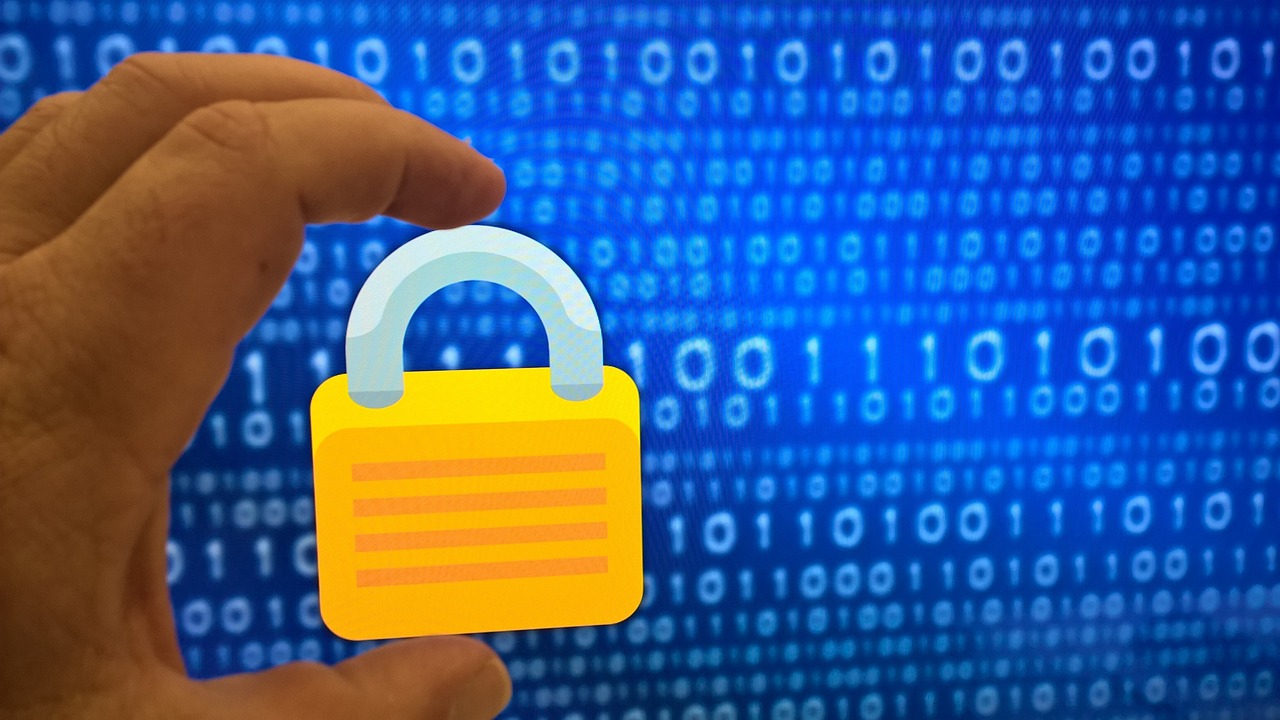
Information Sharing Agreements
In today's interconnected world, effective information sharing is not just a luxury; it's a necessity. As maritime threats grow more sophisticated, nations must collaborate to safeguard their waters. Information sharing agreements (ISAs) serve as the backbone of this collaboration, allowing countries to pool their resources, intelligence, and strategies. These agreements can take many forms, from formal treaties to informal partnerships, but their goal remains the same: to enhance maritime security and response capabilities.
One of the primary benefits of ISAs is the ability to combat piracy, trafficking, and other maritime crimes more effectively. When nations share intelligence about suspicious activities or emerging threats, they can coordinate their responses, making it much harder for criminals to operate. For instance, if one country detects unusual activity in its waters, it can alert its neighbors, allowing for a swift and united response. This kind of collaboration not only deters criminal behavior but also fosters a sense of trust among nations.
Moreover, ISAs can facilitate the sharing of technological advancements and best practices. Countries can learn from each other's experiences, adopting successful strategies and tools that have proven effective in similar maritime environments. This exchange of knowledge is crucial, especially as new threats emerge that challenge traditional defense mechanisms. For example, advancements in satellite surveillance technology can be shared among nations to enhance their monitoring capabilities, ensuring that no suspicious activity goes unnoticed.
However, establishing these agreements is not without its challenges. Differences in legal frameworks, operational protocols, and even political agendas can complicate the process of information sharing. To address these challenges, nations must engage in open dialogues and negotiations to create frameworks that respect each country's sovereignty while promoting collective security. Trust is paramount; without it, nations may hesitate to share critical information that could be the difference between thwarting a threat or facing a maritime disaster.
To illustrate the importance of information sharing agreements, consider the following table that outlines some notable ISAs currently in place:
| Agreement Name | Participating Countries | Focus Areas |
|---|---|---|
| Combined Maritime Forces | Multiple nations including the US, UK, and Australia | Piracy, counter-terrorism, and drug trafficking |
| EU Naval Force Operation Atalanta | European Union member states | Piracy off the coast of Somalia |
| Regional Cooperation Agreement on Combating Piracy and Armed Robbery against Ships in Asia (ReCAAP) | Asian countries and Australia | Maritime security in the Asia-Pacific region |
As we move forward, the need for robust information sharing agreements will only intensify. The maritime domain is vast and often unpredictable, making it essential for nations to stay connected and informed. By fostering strong ISAs, countries can not only enhance their individual security but also contribute to a safer global maritime environment.
1. What is an Information Sharing Agreement?
An Information Sharing Agreement (ISA) is a formal or informal arrangement between nations or organizations to share intelligence, data, and resources to enhance security and response capabilities in maritime operations.
2. Why are ISAs important in maritime security?
ISAs are crucial because they enable nations to collaborate effectively against common threats such as piracy, trafficking, and other maritime crimes, ensuring a coordinated and timely response.
3. What challenges do nations face in establishing ISAs?
Challenges include differences in legal frameworks, operational protocols, and political agendas, which can complicate negotiations and trust-building efforts.
4. Can ISAs include technology sharing?
Yes, ISAs can facilitate the sharing of technological advancements and best practices, allowing nations to enhance their maritime monitoring and response capabilities.
Frequently Asked Questions
- What are the key advancements in maritime defense technologies?
Maritime defense technologies are evolving rapidly, with significant advancements in artificial intelligence, unmanned systems, and advanced sensors. These innovations enhance operational capabilities, allowing navies to respond more effectively to threats while redefining strategies for naval warfare.
- How do cybersecurity threats impact maritime defense?
As maritime systems become more interconnected, they are increasingly vulnerable to cybersecurity threats. These threats can compromise naval assets, leading to potential breaches in national security. It's crucial for defense forces to implement robust cybersecurity measures to protect against these risks.
- What role do autonomous vessels play in maritime defense?
Autonomous vessels are revolutionizing maritime operations by taking on critical roles in surveillance, logistics, and combat support. Their ability to operate without human intervention allows for enhanced efficiency and effectiveness in various defense scenarios.
- Are there regulations governing the use of autonomous vessels?
Yes, the integration of autonomous vessels into maritime operations requires a solid regulatory framework. Existing regulations must be updated, and new policies developed to ensure the safe and responsible use of these technologies in defense.
- What ethical concerns arise from using AI in warfare?
The deployment of artificial intelligence in military applications raises significant ethical questions. Concerns include the potential for autonomous systems to make life-and-death decisions without human oversight, which challenges traditional moral frameworks in warfare.
- How do advancements in surveillance technologies enhance maritime security?
Innovations in radar, sonar, and satellite systems play a crucial role in improving situational awareness for maritime security. These technologies enable better detection and tracking of threats, enhancing the overall safety of maritime operations.
- Why is international collaboration important in maritime defense?
Global challenges in maritime security necessitate international collaboration. Joint exercises and partnerships among allied nations strengthen defense capabilities, enhance interoperability, and improve readiness to address common threats.
- What are the benefits of joint naval exercises?
Joint naval exercises provide numerous benefits, including improved cooperation among allied forces, enhanced interoperability, and increased readiness to respond to maritime threats. These exercises foster trust and understanding between nations, essential for effective maritime defense.
- How does information sharing contribute to maritime security?
Effective information sharing agreements are vital in combating piracy, trafficking, and other maritime threats. By sharing intelligence and resources, nations can enhance their collective ability to address security challenges in the maritime domain.


